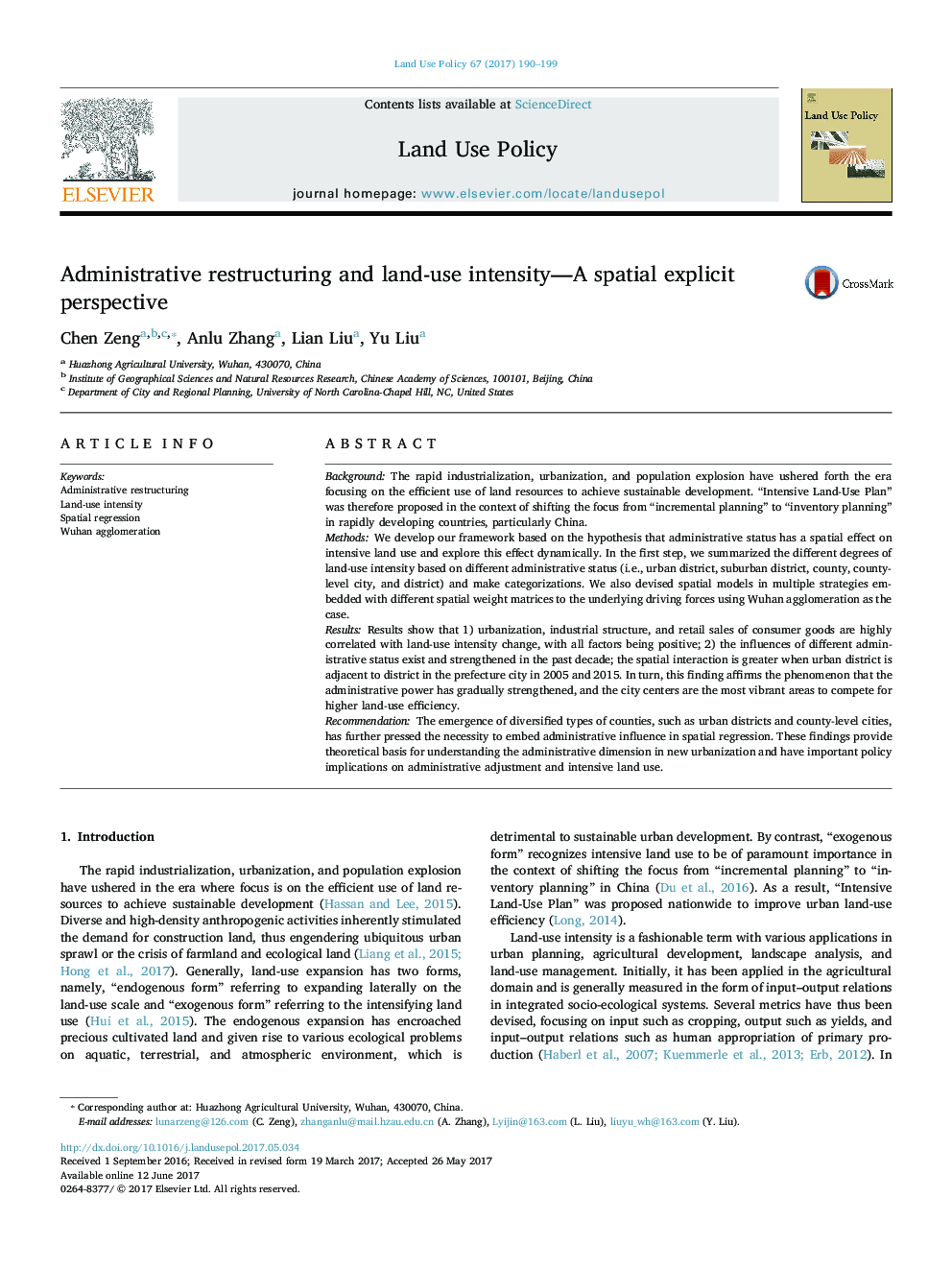| Article ID | Journal | Published Year | Pages | File Type |
|---|---|---|---|---|
| 6460652 | Land Use Policy | 2017 | 10 Pages |
â¢We measure land-use intensity on the basis of the integration of population density, GPD per land and government revenue per land.â¢We devise spatial models in multiple strategies to measure the administrative influence through incorporating the status of urban district, suburban district, district in the county, county and city-level county into spatial weight matrix.â¢Urbanization, sectoral structure and economic development level are identified to be highly correlated with land use intensity change, with all being the positive factor.â¢The influences of different administrative status exist and have strengthened from 2005 to 2015; the spatial interaction is greater when urban district is adjacent to district in the prefecture city.
BackgroundThe rapid industrialization, urbanization, and population explosion have ushered forth the era focusing on the efficient use of land resources to achieve sustainable development. “Intensive Land-Use Plan” was therefore proposed in the context of shifting the focus from “incremental planning” to “inventory planning” in rapidly developing countries, particularly China.MethodsWe develop our framework based on the hypothesis that administrative status has a spatial effect on intensive land use and explore this effect dynamically. In the first step, we summarized the different degrees of land-use intensity based on different administrative status (i.e., urban district, suburban district, county, county-level city, and district) and make categorizations. We also devised spatial models in multiple strategies embedded with different spatial weight matrices to the underlying driving forces using Wuhan agglomeration as the case.ResultsResults show that 1) urbanization, industrial structure, and retail sales of consumer goods are highly correlated with land-use intensity change, with all factors being positive; 2) the influences of different administrative status exist and strengthened in the past decade; the spatial interaction is greater when urban district is adjacent to district in the prefecture city in 2005 and 2015. In turn, this finding affirms the phenomenon that the administrative power has gradually strengthened, and the city centers are the most vibrant areas to compete for higher land-use efficiency.RecommendationThe emergence of diversified types of counties, such as urban districts and county-level cities, has further pressed the necessity to embed administrative influence in spatial regression. These findings provide theoretical basis for understanding the administrative dimension in new urbanization and have important policy implications on administrative adjustment and intensive land use.
